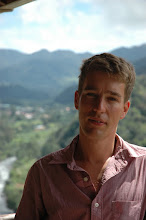The Half A Mile High Club
Among the more surreal experiences of my life I can now add the experience of posing nude for photographs at Everest Base Camp in Tibet. There were ten of us who lined up in the end, clasping a modley collection of rocks, juggling balls, whiskey bottles and national flags in a vague attempt to cover our modesty. It was surprisingly warm for half a mile high, though I don't think that exactly rationalised our actions from the perspective of the bemused local hawkers of Everest jewellery who came zooming up for a gawp on their motorbikes. It really was the most hilarious fun and we've been giggling about it ever since.
Of course the real purpose of our trip was to get a full frontal of Everest, not of each other. In this respect we were incredibly lucky to see a thick mist lift from the mountain as we walked the last 8km up to the camp, revealing the World's highest peak in all its glory. This was apparantly the best sighting in a couple of weeks, as the tail end of the monsoon season effects visibility in the high Himalaya at this time of year. We've certainly had our fair share of rain recently and the effects of this have at times slowed our journey from Lhasa to Kathmandu to a crawl. A large part of the problem is that the grandly titled 'Friendship Highway' linking the countries is actually little more than a dirt track the width of a single vehicle. All along we found ourselves caught up behind heavily overloaded Chinese lorries that were struggling along, and on one occasion had to pitch in to dig out a lorry stuck in the mud and get it moving again with the aid of sand tracks we carry on board. It was beginning to feel like the Tonka team was some sort of international rescue outfit rather than a bunch of tourists.
The compensation was the scenery and the opportunity to use Tonka's roof seats due to our low speed. West of Lhasa our route took us past a string of fascinating Tibetan towns and monasteries, before entering a much wilder and thinly populated area as we approached Shegar, the turn off for Everest. That final drive over a 5200m pass to get to the monastery below Everest was a feast for the eyes, and we took lunch with a panorama of four of the World's six highest mountains as our backdrop. Even the experience later that evening of the World's worst restaurant service at the Government Hotel beside the monastery (we stayed in the monastery guesthouse) didn't dampen the elation of being on the roof of the World. Still, it was odd having waited two and half hours for our food to arrive, to find myself exiting through a window in the dark because the front door was locked and barred with concrete blocks. Shades of 'Hotel California', only with thinner air.

